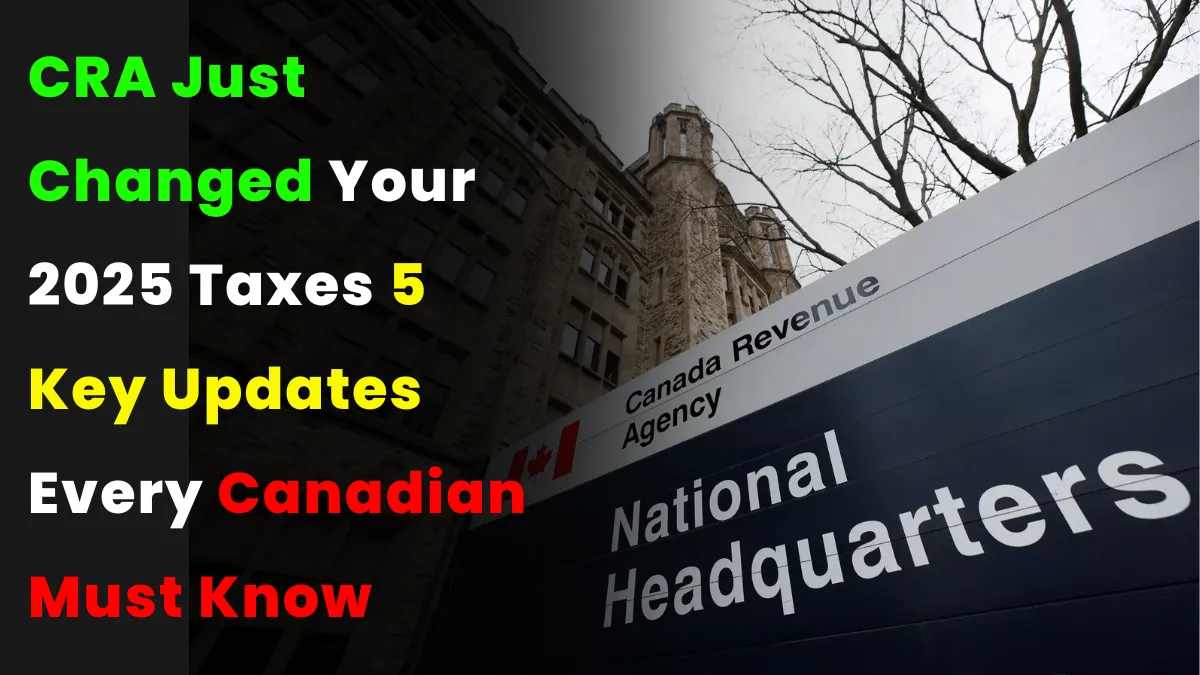The Canada Revenue Agency (CRA) has officially introduced several key updates to its tax regulations for the 2025 assessment year. These changes could impact millions of Canadians — from salaried individuals to self-employed professionals and retirees. Whether you’re planning your RRSP contributions or managing your gig income, staying updated is crucial to avoid surprises come tax season.
Higher Basic Personal Amount (BPA)
One of the most welcomed updates is the increase in the Basic Personal Amount. For 2025, it has been raised to $15,705, offering a higher non-taxable income threshold. This means Canadians will keep more of their income before federal taxes kick in, providing slight relief amid rising inflation and living costs.
TFSA Limit Gets a Boost
CRA has increased the Tax-Free Savings Account (TFSA) contribution limit for 2025 to $7,000, up from $6,500 in 2024. This move allows individuals to grow their savings faster, tax-free. It’s especially beneficial for young investors and retirees looking to maximize their after-tax returns.
Remote Work Deductions Updated
The flat rate deduction method for remote work has been revised. While the temporary pandemic-era method is now phased out, CRA will allow a more detailed expense-based claim — but stricter documentation will be required. Home-based employees should prepare receipts and workspace layouts if they wish to claim deductions.
RRSP Contribution Threshold Increased
The RRSP annual limit has been bumped to $32,490 for the 2025 tax year. This gives Canadians a broader opportunity to reduce their taxable income while saving for retirement — a key financial planning benefit amid ongoing market volatility.
Tax on Capital Gains Tightens Slightly
Perhaps the most debated change: CRA has increased the inclusion rate on capital gains from 50% to 66.67% for annual gains over $250,000. This means higher-income investors may owe more tax on large asset sales, including real estate and stock investments. Middle-income taxpayers with smaller gains are largely unaffected.
Conclusion: CRA’s 2025 tax rule updates reflect a mix of relief and reform — higher limits for savings, tighter documentation for claims, and new thresholds for high-income earners. Whether you’re employed, retired, or investing, these changes deserve your attention. A well-informed tax strategy now can save you thousands later.
Disclaimer: This article is for informational purposes only. Please consult a certified tax professional or financial advisor to understand how these changes apply to your specific tax situation.
Read More:
- SBI Slashes Home Loan Rates! New EBLR Update Effective From June 17, 2025
- RBI के नए लोन रीपेमेंट नियम: 30 जून तक क्यों जरूरी है EMI शेड्यूल दोबारा जांचना?
- बेवकूफ मत बनना! Home Loan लेने में जल्दबाजी कैसी? 12 सरकारी बैंकों में कौन दे रहा सबसे कम ब्याज, जानिए पूरी लिस्ट
- Loan Prepayment Formula: लोन की किस स्टेज पर करें प्रीपेमेंट? सही समय जान लिया तो लाखों बचेंगे
- Personal Loan Vs Credit Card: कब लें पर्सनल लोन और कब करें क्रेडिट कार्ड का इस्तेमाल? पूरी जानकारी यहां

